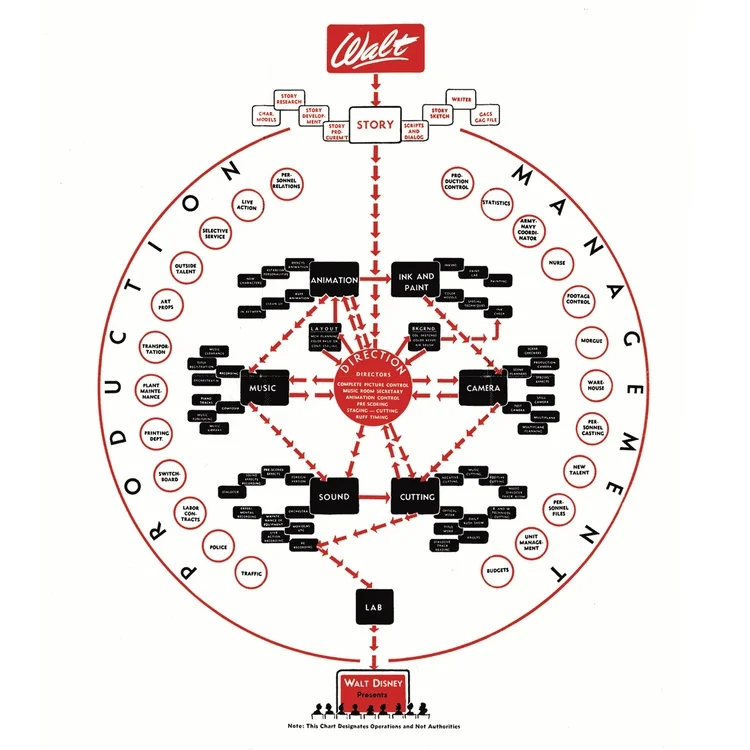The photo above comes from the Disney Animated App which I had been using for the past three-years, as a reader for my now completed film theory course. The caption for the image states:
This early diagram on how the production process worked illustrates that story has always been first and foremost at Disney animation Studios.Story is at the very top of the circle, and the arrows show how story drives all of the other processes.
Which reiterates the entry posted a month ago that Brad Bird gave on Andrew Gordon's Spline Cast, back in 2007 as he was working on Ratatouille. Here Bird highlights why he's A-listed withthe Academy, talking precisely about the importance of crafting a great story and its development throughout the project in.
This method of thinking I believe is encouraging within the framework of the Pixar BrainTrust, evident by the record 14 number one hits the studio has achieved up to this point in history. Much of this "magic" is due largely in part to the mentorship John Lasseter has established the studio. You can take any film they have crafted, locate and summarize its sensibilities into basically two sentences. This act of getting to the heart of the feature is something I noticed continually during my two Summer Sessions at Lasseter's Alma-mater CalArts while viewing the archives of student shorts know as Producer Shows. Short after short is perfectly timed for 4-6 minutes worth of high-level storytelling, truncating and tailoring the overall storytelling to its best-appropriate pace. It's no accident that since Lasseter was named CCO of Disney Animated Features back in 2006, the studio has seen a renaissance in its approach to filmmaking.
In the featured article To The Rescue of last November's Wired Magazine, Senior Editor Caitlin Roper spotlights how the purchase of Pixar 8 years ago, ushered in the present state of Disney Featured Animation. At that time, Disney had been going through a decade-long drought and at times seemed not even relevant in the medium which made the studio such an icon in the first place. Roper reports, that "When Lasseter and Catmull came aboard, they were encouraged to consider shutting down Disney Animation altogether and replacing it with the ascendant Pixar. "there was so much pressure on us to close these doors," Lasseter says. "Ed and I absolutely could not do that." The Ed in that conversation is Ed Catmull, who's book Creativity Inc. I posted about last April when it was released, covers the merger between Disney and Pixar creatives.
My question is how did Disney even come to such an idea? An answer to this can be found in the work that Roy Disney spearheaded during the mid-1980s, which brought in Michael Eisner and Frank Wells to replace Ron Miller as president and CEO. This partnership whether Eisner proved very useful in the beginning, restructuring the way in which the studio operated opening the door for what has been deemed the renaissance of the studio; due to the success of Roy's department. But by the early 2000s, the "magic" of Eisner's efforts had begun to waver. Which led to the second "Save Disney" campaign, leading Eisner to be replaced by the current CEO Bob Iger. Igor is featured in this month Fortune magazine cover story, I'm still reviewing this but, will cover the subject later this month.
But, back to Walt's vision for the studio and the way in which the studio would succeed after his death, is not an easy midday Google search. I'll be exploring my contacts and reaching out to various animation historians, in an effort to provide some real heft to the conversation. So, I'll be revisiting the "What Would Walt Do" subject in installments and frequently. For now I would encourage readers who are interested in the way technology has aided the storytelling of animated features, to read Catmull's book Creativity Inc., review Igor's Empire of Tech, and The Wired interview To The Rescue with John Lasseter. Which cover in-depth the system in which Disnay Featured Animation is implementing now under the leadership of these three inspiring figures.









